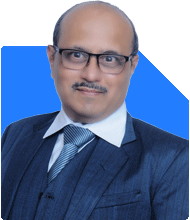
I am going to be 36 years soon. I have a wife and 3 years old son.
I currently have 30LPA ctc and living in second tier city. I am currently living in a home owned by me. I have no loans currently.
I have investments as below:
1) Mutual Funds: 9 Lakhs (34000 per month spread across multiple mfs)
2) Equity Shares: current value: 14 Lakh
3) EPF: 20 Lakh (34000 per month)
4) PPF: 18 Lakh (1.5 lakh PA)
5) SGB: 100 gms (bought in the last SGB before it got discontinued)
6) ULIP: 7 Lakh (ending on 2027 with 5000 per month)
7) RD: 11 lakhs saved - 1 Lakh per month (saving for buying land in upcoming areas, hopefully will buy land at cost around 20-25 lakh max)
I want to retire by 45 years. Currently, I get 1.75 lakh per month in hand after tax and epf deductions. My monthly expenses is max 20-25 K per month.
Please suggest, what should I do to retire with full financial security? As a family we don't spend too much on unnecessary wants. Even after retirement, I need atleast 1-1.5 lakh per month so that I can continue my investment in MFs.
Ans: Appreciate your discipline in saving and living below your means.
Having no loans, strong monthly surplus, and clear goals at age 36 is rare.
Early retirement by 45 is bold but possible with smart, flexible strategies.
Let’s plan everything step-by-step from a 360-degree view.
? Assessing your financial standing today
– Age: Almost 36 years
– Family: Wife and 3-year-old son
– Residence: Own house, no home loan
– Take-home pay: Rs.?1.75 lakh per month
– Monthly spending: Rs.?25,000 max
– Huge surplus of Rs.?1.5 lakh monthly
– Investments:
Mutual Funds: Rs.?9 lakh + Rs.?34,000 monthly
Equity Shares: Rs.?14 lakh
EPF: Rs.?20 lakh + Rs.?34,000 monthly
PPF: Rs.?18 lakh + Rs.?1.5 lakh annually
SGB: 100 grams
ULIP: Rs.?7 lakh + Rs.?5,000 per month till 2027
RD: Rs.?11 lakh + Rs.?1 lakh per month (land saving)
– No debt, low expenses, strong savings habits
– Mindset is long-term and conservative, which helps consistency
– These are great strengths for your goal of retiring early
? Immediate cash flow allocation strategy
– Monthly inflow: Rs.?1.75 lakh
– Monthly expense: Rs.?25,000
– Surplus: Rs.?1.50 lakh every month
– Out of this:
Rs.?1 lakh RD set aside for land
Rs.?5,000 ULIP
Rs.?34,000 mutual funds
– Remaining usable monthly surplus = around Rs.?11,000
– RD for land is short-term. Once land is bought, you can reroute that Rs.?1 lakh
– Try to close land purchase in the next 12–15 months if possible
– Till then, continue current setup without change
? On land purchase plan using RD
– Buying land is not an investment, only an asset
– Value appreciation is uncertain and liquidity is poor
– If land is for future construction or inheritance, then continue
– If thinking of resale or rental return, that’s not ideal
– Once land is bought, stop RD and use that Rs.?1 lakh monthly for retirement investments
– Don’t keep too much locked in physical assets that give zero income
? Review of ULIP investment
– You have Rs.?7 lakh in ULIP and paying Rs.?5,000 monthly till 2027
– That’s Rs.?60,000 per year till 2027
– ULIPs mix insurance and investment. They give low flexibility, low returns
– Exit charges reduce returns in early years
– Since maturity is near (2027), hold till then
– But do not invest in any more ULIPs going forward
– After maturity, reinvest the amount in mutual funds via regular plans
– Choose funds through a Certified Financial Planner, not directly
? Disadvantages of index funds and direct plans
– Index funds follow the market, no protection in downturns
– Actively managed funds aim for higher returns through expert decisions
– Index funds lack downside control and ignore market conditions
– Active funds adapt and manage risk actively
– Direct plans save commission but lack CFP support
– Without guidance, investors make emotional decisions and get poor results
– Regular mutual funds via a CFP and MFD give review, rebalancing, and tax advice
– This helps long-term growth and control
? EPF and PPF roles in retirement
– EPF corpus grows with job and interest
– Current EPF balance is Rs.?20 lakh
– With Rs.?34,000 per month, it will be sizeable at 45
– Same for PPF with Rs.?1.5 lakh per year
– But both are locked and low-liquidity until certain age
– EPF cannot be withdrawn fully before 58
– PPF matures 15 years after start, partial withdrawal allowed after 7 years
– So these will not help fully at age 45
– They are useful later at 55–60 for stability
– You must create a separate retirement fund that’s flexible from age 45
? SGB role in retirement
– 100 grams of SGB gives annual interest till maturity
– Can redeem after 5th year but full amount at 8th year only
– It adds to long-term safety layer but cannot be main income source
– Keep it as part of gold allocation
? Equity shares – how to handle
– Rs.?14 lakh in equity shares is good
– But direct stock investments need strong research and review
– If you don’t track them regularly, returns may suffer
– Volatility and concentration risk are higher
– Shift some portion to mutual funds in a phased way
– Use guidance from a Certified Financial Planner
– Keep not more than 20% in direct equity
? Building retirement corpus by age 45
– You want Rs.?1 lakh to Rs.?1.5 lakh per month post retirement
– This will be for both lifestyle and investments
– You will need to build a flexible corpus that can generate income early
– You have 9 years to build it (from age 36 to 45)
– Starting now, monthly retirement allocation should be Rs.?75,000–1 lakh
– This should go into actively managed mutual funds only
– Use 3 to 5 funds, across large-cap, mid-cap, and hybrid categories
– Select funds through an MFD or CFP, not direct
– Avoid chasing returns. Stay consistent every month
? Mutual fund portfolio structure
– Diversify across equity and hybrid funds
– Allocate more to growth now, shift to balanced later
– Use STP and SWP from age 45 onwards for income
– STP helps reduce risk while moving money from debt to equity
– SWP creates monthly cash flow without breaking your investments
– Ensure you optimise capital gains
– For equity: LTCG above Rs.?1.25 lakh taxed at 12.5%
– STCG taxed at 20%
– Debt fund gains taxed as per your income slab
– Tax planning in mutual funds is a yearly task
– Your CFP will guide you how to rebalance and withdraw tax efficiently
? After retirement – managing cash flows
– From age 45, you will need monthly income of Rs.?1.5 lakh
– Use SWP to draw money from mutual funds systematically
– Don’t withdraw full in one go
– Plan withdrawals in such a way that tax stays low
– Use part of corpus in hybrid funds and debt for safety
– Keep 12–18 months expenses in liquid or ultra-short fund
– Review income and expenses yearly
? Emergency fund and insurance layer
– You must have Rs.?3–6 lakh in liquid fund for emergencies
– This covers medical or job gaps
– Term insurance of Rs.?1 crore minimum is needed till age 50
– Health insurance for family of at least Rs.?10–15 lakh
– Medical inflation is rising. Don’t ignore this layer
– Re-check ULIP if it includes insurance. But don’t rely on it fully
? Child education and marriage goals
– Your child is 3 years old now
– Education goal in 15 years, marriage in 25 years
– Start a separate SIP of Rs.?15,000 for education now
– Start another Rs.?10,000 for marriage goal
– These should go into separate mutual fund folios
– Keep these funds untouched for personal needs
– These goals must be protected from your retirement usage
? Final Insights
– You are far ahead in savings, spending habits, and goal setting
– Retiring at 45 is bold but possible with discipline
– Key actions:
Avoid real estate unless for use, not investment
Avoid annuities, index funds, and direct funds
Focus fully on mutual funds with regular plan under CFP guidance
After land purchase, invest that RD amount into retirement mutual funds
ULIP – hold till 2027, then switch to mutual funds
PPF and EPF – hold as retirement buffers beyond age 55
– From now till age 45, build a flexible mutual fund portfolio
– From 45 onwards, use SWP to generate income
– Track capital gains tax while redeeming
– Don’t withdraw from PPF or EPF early
– These are your late retirement shields
– Maintain emergency fund and health cover
– Protect your retirement and your child’s future separately
– Get yearly review from Certified Financial Planner
– Adjust portfolio as goals get closer
– Stay consistent and patient. You can retire early and live well
Best Regards,
K. Ramalingam, MBA, CFP,
Chief Financial Planner,
www.holisticinvestment.in
https://www.youtube.com/@HolisticInvestment



























